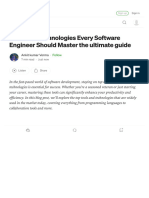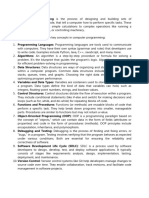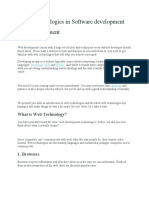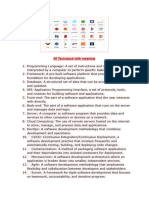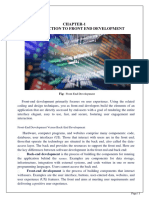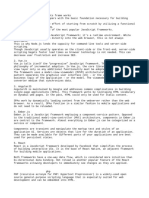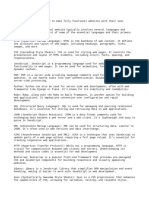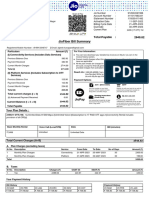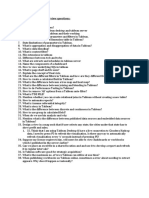0% found this document useful (0 votes)
22 views13 pagesLanguages and Frameworks 1
The document provides an overview of various programming languages and frameworks, detailing their information, uses, long descriptions, related frameworks, and technologies. It covers languages such as Ruby, PHP, Perl, Python, Scala, SQL, Java, JavaScript, TypeScript, Go, C#, R, C++, Kotlin, Swift, Objective-C, and HTML. Each entry highlights the language's purpose, development history, and ecosystem, emphasizing their significance in web development, data science, mobile applications, and more.
Uploaded by
Dipali GaikwadCopyright
© © All Rights Reserved
We take content rights seriously. If you suspect this is your content, claim it here.
Available Formats
Download as DOCX, PDF, TXT or read online on Scribd
0% found this document useful (0 votes)
22 views13 pagesLanguages and Frameworks 1
The document provides an overview of various programming languages and frameworks, detailing their information, uses, long descriptions, related frameworks, and technologies. It covers languages such as Ruby, PHP, Perl, Python, Scala, SQL, Java, JavaScript, TypeScript, Go, C#, R, C++, Kotlin, Swift, Objective-C, and HTML. Each entry highlights the language's purpose, development history, and ecosystem, emphasizing their significance in web development, data science, mobile applications, and more.
Uploaded by
Dipali GaikwadCopyright
© © All Rights Reserved
We take content rights seriously. If you suspect this is your content, claim it here.
Available Formats
Download as DOCX, PDF, TXT or read online on Scribd
/ 13
